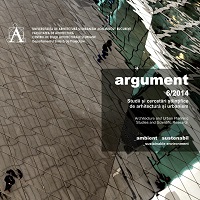REABILITAREA SUSTENABILĂ A SPAŢIULUI PUBLIC URBAN
THE SUSTAINABLE REHABILITATION OF THE URBAN PUBLIC SPACE
Author(s): Anca Mihaela ConstantinSubject(s): Energy and Environmental Studies, Policy, planning, forecast and speculation, Rural and urban sociology, Economic development
Published by: Editura Universitară “Ion Mincu”
Keywords: rehabilitation; public space; sustainable development;
Summary/Abstract: The configuration strategies of public spaces are sometimes either based on cartesian geometrization, or made as a reply to an unreadable dynamic of image and information flows. Thus, the results are either dry and tasteless spaces, geometrically stiff and poor in significations or alienating image scenographies where man doesn’t fit in. This paper aims to bring up the “normal” situation where the design process of a public space must start from the network of specific relationships between people to whom it is addressed and the geometrization – meaning the translation into architecture – of these relationships that must send to the original horizon of their culture, from where this unfailing fact and the style matrix result. Taking this into consideration, it aims to identify from the original group and the mark of social cohesion, the specific human relationships for that group, considering the fact that this kind of ”normal” space is actually an eminent social space – a space of united groups, but also one of the individual within the extension of his privacy and not least a sustainable space that is embedded in the treatment and approach to the local public space. Thus, it foreshadows the idea that a public space thought as a space of social aggregation is not addressed exclusively to the characteristics and needs of the group. It is equally able to respond to individual needs and support behaviors substantially different from common behavioral group register. In this regard, the public space that stimulates group aggregation is not an uniform area. Basically, it offers, in addition to a range of recognizable qualities (which resonates with the needs and group dynamics), the possibility of combining them into an almost inexhaustible variety of configurations satisfying the needs of each individual.
Journal: Argument
- Issue Year: 2014
- Issue No: 6
- Page Range: 335-342
- Page Count: 8
- Language: English, Romanian

